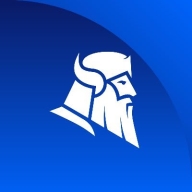

Find out what your peers are saying about Microsoft, HCLSoftware , Qualys and others in Patch Management.


Automate your vulnerability management and save valuable time and resources with a patch management solution that lets you deploy and patch any Microsoft and Linux OS, 3rd party and proprietary software, on-the-fly, from anywhere in the world and according to any schedule. With complete visibility and granular control over your entire software inventory.
Play it your way; set up patching or updating schedules the way you like them, force-push updates to users or AD groups, uninstall unstable software versions or you can sit back, relax, and let our patch management tool figure out what’s best for your vulnerability and software asset management needs.
Unifying Windows and Linux under a single banner – Patch & Asset Management can now provide powerful and insightful vulnerability and patch management for both Windows and Linux-running machines and group policies. Install, deploy, and push security and non-security updates & patches on any system anywhere and anytime, regardless of build. Compatible with Ubuntu 18.04+.
As soon as 3rd party vendors release new patches, our technology silently deploys them to your endpoints based on your configured policies, without the need for manual input, reboots or user interruption. Additionally, you can always use the Infinity Management add-on to deploy and patch any other custom application that supports silent installation commands.
Patch & Asset Management has the shortest vendor to end-user waiting time: < 4 hours, which includes testing and repackaging. Every patch, update, rollup, hotfix, security pack, or fix is tested, adware-cleaned, and repackaged before added to your Heimdal cloud. HTTPS encapsulation ensures data in-transit privacy. Once uploaded to the Heimdal cloud, the resource becomes available for distribution and deployment.
Enjoy completely customizable set-and-forget settings that allow you to automatically deploy your software and updates, with a full compliance and CVE/CVSS audit trail. This gives you the powerful option to tailor your entire IT environment. You can create policies that meet your exact needs across the Active Directory groups within your organization. Once configured, the deployment is easy and simple. Low bandwidth resources are necessary since our patch management software uses local P2P for patch distribution & deployment instead of client-server models.
Microsoft Defender for Endpoint is a comprehensive security solution that provides advanced threat protection for organizations. It offers real-time protection against various types of cyber threats, including malware, viruses, ransomware, and phishing attacks.
With its powerful machine-learning capabilities, it can detect and block sophisticated attacks before they can cause any harm. The solution also includes endpoint detection and response (EDR) capabilities, allowing organizations to quickly investigate and respond to security incidents. It provides detailed insights into the attack timeline, enabling security teams to understand the scope and impact of an incident.
Microsoft Defender for Endpoint also offers proactive threat hunting, allowing organizations to proactively search for and identify potential threats within their network. It integrates seamlessly with other Microsoft security solutions, such as Microsoft Defender XDR, to provide a unified and holistic security approach. With its centralized management console, organizations can easily deploy, configure, and monitor the security solution across their entire network.
Microsoft Defender for Endpoint is a robust and scalable security solution that helps organizations protect their endpoints and data from evolving cyber threats.
We monitor all Patch Management reviews to prevent fraudulent reviews and keep review quality high. We do not post reviews by company employees or direct competitors. We validate each review for authenticity via cross-reference with LinkedIn, and personal follow-up with the reviewer when necessary.